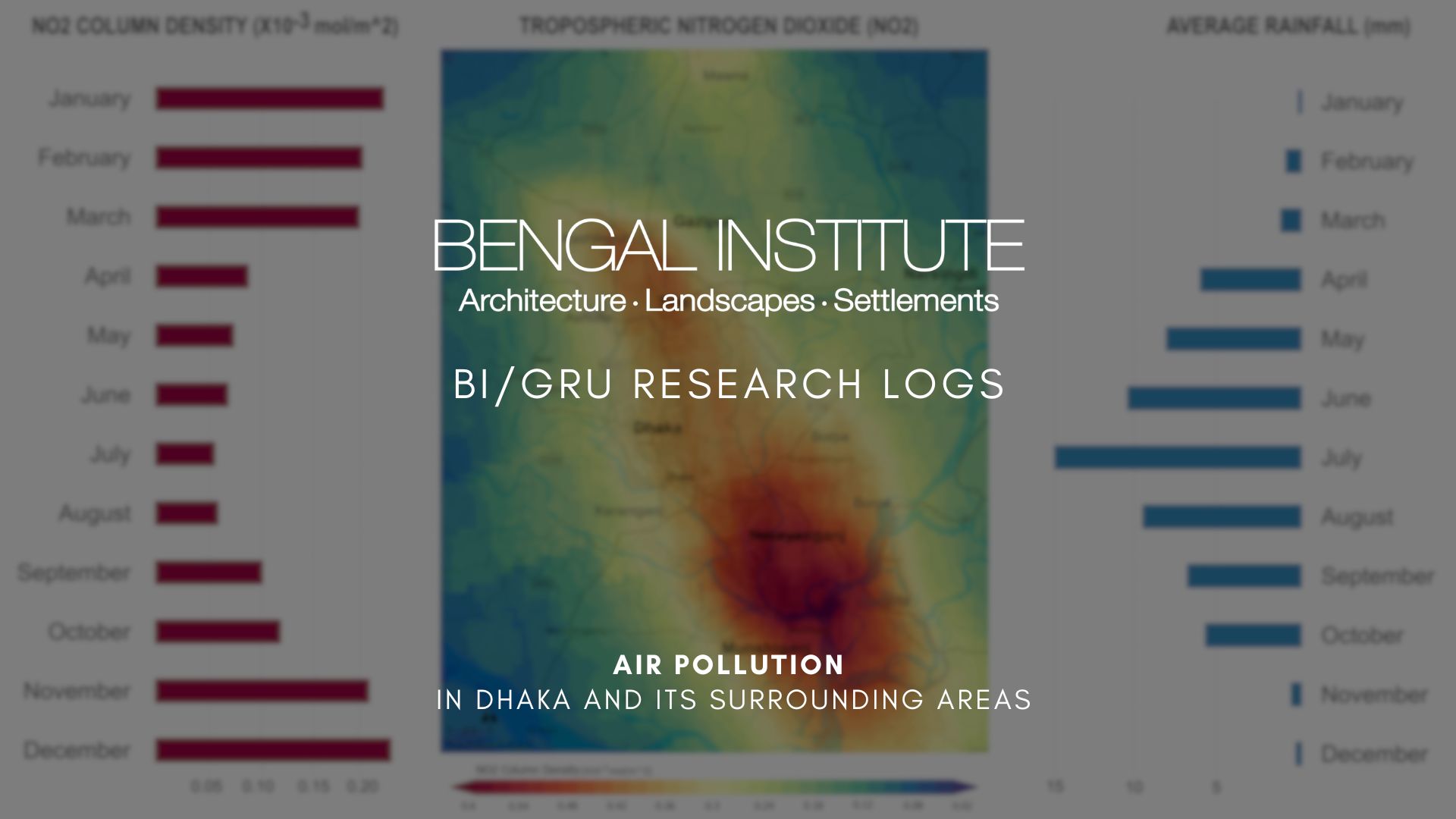

Dhaka remains one of the megacities with the worst air quality in the world. Massive fossil fuel burning, industrial emission, and unregulated waste disposal are the major causes of excessive air pollution in Dhaka city and its surrounding areas, such as Narayanganj, Gazipur, and Munshiganj. Nitrogen Oxides (NOx), Carbon Dioxide (CO2), Sulfur Dioxide (SO2), and Particulate Matter (PM) are the most common and hazardous pollutants emitted from industrial processes and transports. Regular breathing in the polluted air raises a number of serious health issues, including cardiovascular diseases, asthma, bronchitis, anemia, kidney diseases, headaches, and allergies. A satellite-based analysis of GRU reveals that atmospheric NO2 is fourfold in the months of November to March in Dhaka’s sky compared to the rainy months (April to September). In July, the level of NO2 is the lowest in the air due to the highest average rainfall (~15mm) in a year. Wind is another important factor that affects the spatial distribution of NO2 as well as other pollutants in the atmosphere.
Author/s: Sanjoy Roy, Sabiha Sabrina
[GRU is the Geographic Research Unit of Bengal Institute]